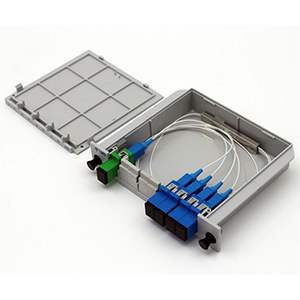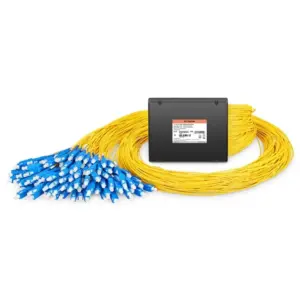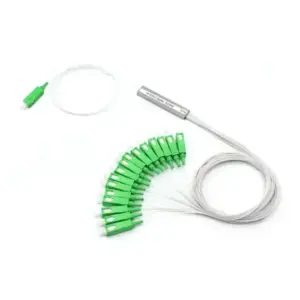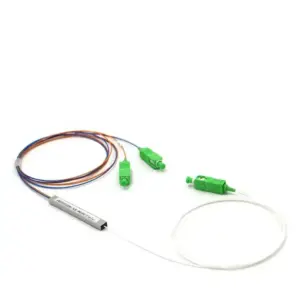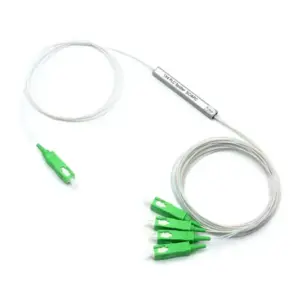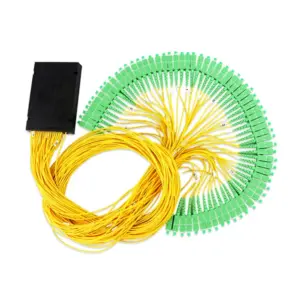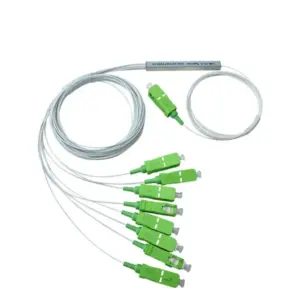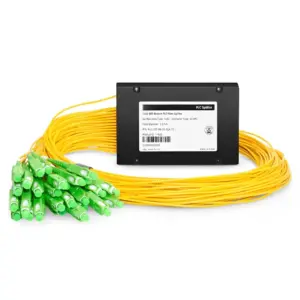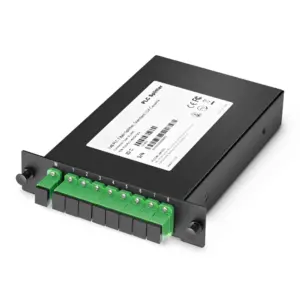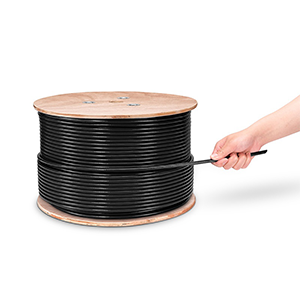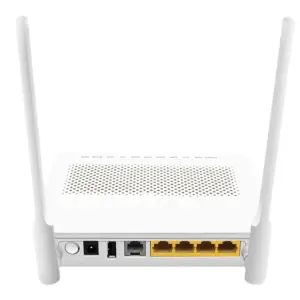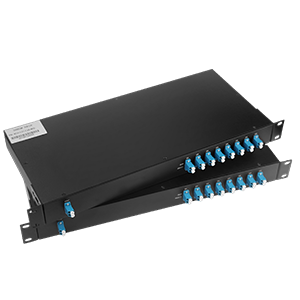In this article, I will take an in-depth look at the working principles, types, and application scenarios of fiber optic splitters. As an important optical device, fiber optic splitters can distribute optical signals to multiple output ports, providing flexible and efficient solutions for your fiber optic communications.
With the rapid development of information technology, the demand for data transmission and communication continues to increase. As a high-speed, large-capacity, and low-loss transmission medium, optical fiber technology is widely used in various fields. As one of the important components in the optical fiber network, the optical fiber splitter plays a key role in signal distribution, optical fiber sensing, spectral analysis, etc.
Definition and working principle of fiber optic splitter
A fiber optic splitter is an optical device used to distribute incident optical signals to multiple output ports. It can split a single optical signal into multiple identical or different output signals for different application requirements.
The working principle of fiber optic splitters is based on the interference and coupling effects of light. Typically, a fiber optic splitter consists of an input fiber and multiple output fibers. The following is the working principle of fiber optic splitter:
-
Incident optical signal: The incident optical signal enters the optical fiber splitter through the incident optical fiber. This incident light signal can be a single light wave or multiple light waves.
-
Light interference: The incident light signal experiences interference phenomena inside the fiber optic splitter. This is because there are multiple optical paths inside the fiber splitter, and the optical signals propagate along different paths and meet at the output port.
-
Spectrum splitting of light: During the interference process, the incident light signal will be divided into different wavelengths or energy components and distributed to different output ports. This is achieved through the interference effect of light. Light of different wavelengths or energies forms the result of coherent superposition or destructive interference during the interference process.
-
Light distribution: The optical splitter distributes the split optical signals to multiple output ports according to the design requirements. The number of output ports can be determined according to the requirements and can be two, four, eight or more.
The optical fiber splitter splits the incident optical signal into multiple output signals through the interference and coupling effects of light. The working principle of the optical splitter makes it play an important role in applications such as optical fiber communications, spectral analysis, and sensor networks. Different types of optical fiber splitters can achieve different functions. For example, a power splitter can distribute optical signals according to a certain proportion, while a wavelength splitter can separate optical signals according to different wavelengths.
Types of fiber optic splitters
There are many types of fiber optic splitters, each type is suitable for different scenarios and has its own advantages and disadvantages. The following are several common types of fiber optic splitters:
-
Averaging beam splitter (1xN): The averaging beam splitter evenly distributes the incident optical signal to multiple output ports. Its working principle is achieved through the interference and coupling of light. Averaging optical splitters are suitable for scenarios where optical signals need to be equally divided into multiple targets, such as fiber optic sensor networks and distributed fiber optic measurement systems. The advantage is that it is simple and evenly distributed, but the disadvantage is that it cannot separate optical signals according to different wavelengths or energies.
-
Equalizing beam splitter (2xN): An equalizing beam splitter divides the incident light signal into two equal output signals. It is commonly used for fiber insertion loss compensation and signal monitoring in fiber optic communication systems. The advantage of the equalizing optical splitter is that it is simple and easy to use, but the disadvantage is that it cannot achieve multiple outputs.
-
Tree optical splitter: A tree optical splitter is a multi-stage optical splitter that can distribute optical signals to multiple output ports, and each output port can be assigned again to more output ports. Tree-like optical splitters are suitable for scenarios that require complex distribution structures, such as optical fiber sensor networks and optical fiber test systems. The advantage is flexibility and scalability, but the disadvantage is high complexity.
-
Fiber optic coupler: A fiber optic coupler is a device that combines multiple incident light signals into a single output signal. Its working principle is achieved through the coupling effect of light. Fiber optic couplers are suitable for scenarios where multiple light sources need to be combined into a single output, such as fiber optic sensor networks and fiber optic communication systems. The advantage is that it is simple and convenient to combine multiple light sources, but the disadvantage is that the separation function cannot be realized.
It is important to select the appropriate fiber splitter type based on specific application needs and system design requirements. Factors such as uniformity of signal distribution, flexibility in wavelength selection, complexity, and optical loss need to be considered. The most suitable fiber splitter type should be selected based on the actual situation to meet the needs of the specific application.
Application scenarios of fiber optic splitters
Optical fiber splitters are widely used in the field of optical fiber communications. The following are some practical application examples:
-
Optical fiber transmission network: In fiber optic transmission networks, fiber optic splitters are used to distribute optical signals to different destinations, such as branching to multiple users or connecting to different devices. It can distribute and combine signals, allowing fiber optic networks to efficiently transmit large amounts of data. The selection and configuration of fiber optic splitters is critical to the connection quality and system performance of the network.
-
Fiber optic sensing: Fiber optic sensing is a technology that uses the characteristics of optical fibers for measurement and monitoring. Fiber optic splitters play a key role in fiber optic sensing. They can distribute optical signals to multiple sensor nodes to achieve multi-point monitoring. For example, in structural health monitoring, fiber optic splitters can be used to distribute optical signals to multiple fiber optic sensors to monitor structural changes and damage in real time.
-
Fiber optic distributed sensing: Fiber optic splitters also play an important role in fiber optic distributed sensing. Optical fiber distributed sensing is a technology that uses optical fiber as a sensor to achieve measurement. By distributing optical fibers to different areas or locations, fiber optic splitters can separate optical signals into different channels, allowing distributed sensing systems to monitor parameter changes at multiple locations simultaneously, such as temperature, pressure, and strain.
Fiber optic splitters play an important role in the above application scenarios. They can distribute, combine and separate optical signals to meet the needs of multi-point monitoring, network connection and system expansion. Selecting the appropriate type and configuration of fiber optic splitters is critical to ensuring system reliability, performance and flexibility.
In the design and deployment of fiber optic communication systems, fiber optic sensing systems, and other optical applications, a full understanding of the characteristics and application scenarios of fiber optic splitters can help engineers and technicians better implement system design and optimization.
Installation and connection of fiber optic splitter
The installation and connection of fiber optic splitters usually involves the following aspects:
-
Connector type: Fiber optic splitters usually use standard fiber optic connectors, such as SC, LC, FC, ST, etc. When selecting a connector type, it needs to be matched according to the types of other devices and fiber optic connection ports in the system to ensure connection compatibility.
Fiber optic connection method: There are generally two connection methods for fiber optic splitters: plug-in connection and block connection.
-
Plug-in connection: This connection method uses a fiber optic connector and the connection is achieved by inserting the optical fiber of the connector into the input/output port of the fiber optic splitter. Plug-in connections are very common, flexible and convenient, and are suitable for scenarios that require frequent replacement or adjustment of connections.
-
Block connection: This connection method uses an optical fiber block to directly connect the bare fiber of the optical fiber splitter to the optical fiber block. Block connections typically require fiber cutting and precise alignment, so they are generally used during installation and are used for stable connections that do not require frequent replacement or adjustment.
-
Connection steps:
-
Make sure that the types of fiber optic splitters and fiber optic connectors match, for example, if using SC connectors, make sure the fiber optic splitter has an SC port.
-
Clean the end face of the fiber optic connector to ensure there is no dirt or damage on the end face.
-
Gently insert the fiber optic connector into the input/output port of the fiber optic splitter, making sure it is inserted into the correct position and aligned with the port.
-
For plug-in connections, make sure the connector is inserted into place and tighten the connector latch (if present).
-
For block connection, ensure that the fiber block head is accurately aligned with the bare fiber of the fiber splitter, and take appropriate fixing measures, such as splicing or using mechanical fixings.
-
After the connection is completed, verify and test the connection to ensure the signal transmission quality and connection stability.
-
When installing and connecting fiber optic splitters, best practices and standard operating procedures for fiber optic connections should be followed to ensure fiber quality and performance. In addition, pay attention to keeping the optical fiber clean and preventing bending or excessive tension to avoid signal attenuation and damage. If necessary, consult a professional fiber optic technician or follow the installation guidelines provided by the equipment manufacturer.
Performance parameters and specifications of fiber optic splitters
The performance parameters and specifications of a fiber optic splitter are important to ensure that it operates properly and meets system requirements. The following are some common fiber optic splitter performance parameters and related specifications:
-
Split Ratio: The split ratio indicates the proportion of the input optical signal distributed by the optical fiber splitter to the output port. For example, a 1×4 optical splitter divides the input signal into four equal parts, and each output port receives a quarter of the input signal. The splitting ratio is usually expressed in decibels (dB).
-
Insertion Loss: Insertion loss is the power loss of optical signals when they pass through a fiber optic splitter. It is a measure of how much a beam splitter attenuates signal strength. Typically expressed in decibels, lower insertion loss indicates higher transmission efficiency.
-
Uniformity: Uniformity refers to the degree of uniformity of a fiber optic splitter when distributing optical signals to multiple output ports. Ideally, each output port should receive equal optical power. Uniformity is expressed in decibels, with higher uniformity indicating a more even distribution.
-
Mismatches Loss: Mismatches loss is the loss caused by the mismatch between the input and output ports of the fiber optic splitter and the fiber optic connector or other fiber optic equipment. It can cause additional optical power loss and signal degradation.
-
Norms and Standards: The design and performance of fiber optic splitters generally adhere to relevant specifications and standards to ensure interoperability and consistency. For example, TIA-568-C.3 is a fiber distributed system (Fiber Distributed Systems) standard issued by the Telecommunications Industry Association (TIA), which provides requirements and test methods for optical splitters and other optical fiber components. ITU-T G.657 is an optical fiber specification published by the International Telecommunications Union (ITU), which contains the requirements and characteristics of optical fiber splitters.
When selecting a fiber optic splitter, you should pay attention to its performance parameters and ensure that it complies with applicable specifications and standards. This helps ensure the performance and reliability of fiber optic splitters to meet the needs of specific applications. In addition, comparing the product specifications and performance data of different optical splitter suppliers is also an important factor in making the right choice.
Summary:
Thank you for reading our blog! We take an in-depth look at the working principles, types, and application scenarios of fiber optic splitters. As an important optical device, fiber optic splitters can distribute optical signals to multiple output ports, providing flexible and efficient solutions for your fiber optic communications.
When you choose our fiber optic splitter products, you will get high-quality optical solutions and excellent performance. We are committed to providing you with advanced technical support to meet your needs and bring higher efficiency and reliability to your fiber optic communications.
fiber optic splitters FAQ
A fiber optic splitter is a passive optical device that divides an incoming optical signal into multiple output signals, allowing one input to be distributed to multiple destinations. It enables the sharing of a single fiber optic cable among multiple devices or users.
Yes, a fiber optic signal can be split using a fiber optic splitter. The splitter divides the signal into multiple outputs, each carrying the same information as the original signal.
No, a fiber optic splitter does not reduce the speed of the transmitted signal. It splits the signal optically without introducing significant loss or affecting the signal quality, so the speed remains unaffected.
In Fiber-to-the-Home (FTTH) deployments, a commonly used splitter is the PLC (Planar Lightwave Circuit) splitter. PLC splitters offer high splitting ratios and low insertion loss, making them suitable for distributing the fiber optic signal to multiple subscribers in a passive optical network (PON) architecture.
A splitter can introduce some signal loss as the optical power is divided among the output ports. However, modern fiber optic splitters are designed to minimize this loss, and the impact on the signal strength is typically within acceptable limits specified by industry standards.
The two main types of fiber optic splitters are:
Fused Biconical Taper (FBT) splitter: It uses a heat source to fuse and taper two or more fibers together, allowing the signal to divide. FBT splitters are cost-effective but have limitations in terms of splitting ratios and wavelength compatibility.
Planar Lightwave Circuit (PLC) splitter: It utilizes a silica-based waveguide chip to split the optical signal. PLC splitters offer a wider range of splitting ratios, better uniformity, and compatibility with various wavelengths. They are commonly used in modern fiber optic networks.
fiber optic splitters related products
-
128-channel optical fiber PLC splitter
-
16-channel optical fiber PLC splitter
-
2-way optical fiber PLC splitter
-
32-channel optical fiber PLC splitter
-
4-way optical fiber PLC splitter
-
64-channel optical fiber PLC splitter
-
8-channel optical fiber PLC splitter
-
ABS module PLC fiber optic splitter
-
Box PLC optical fiber splitter

